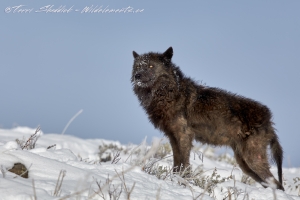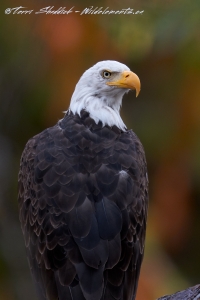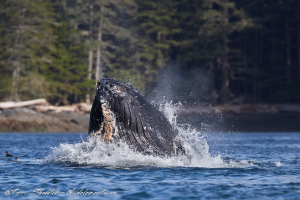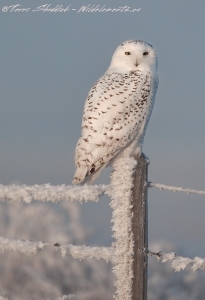20 Dec Canon Extenders
Notice: Trying to access array offset on value of type bool in /var/www/wp-content/plugins/bridge-core/modules/shortcodes/shortcode-elements/_social-share/templates/social-share.php on line 124
Canon’s Extenders (referred to as tele-converters by some) are available in 1.4x and 2.0x versions, and can be used with most of Canon’s prime L-series lenses, and 70-200 & 100-400 zoom lenses. But the question I often get asked is whether they are any good. The common answer that I have for this question is “It Depends”. My comments below will be based on using the newer series of the extenders (1.4x III and 2.0x III versions of the extenders, and it may not carry through to the previous versions).
I own both the 1.4x III, and 2.0x III extenders, and I always bring them both when I travel, and will use them when I want to get a fuller frame shot, or when shooting something off in the distance, however, I’m doing so being aware of the trade-off of doing so.
What does “it depend” on:
If you can get the image without using them, then do it
What I mean is that you have another lens with you that can get you the same focal length then it’s probably going to provide you a sharper image than getting there with a lens plus the extender (I can’t say definitely without evaluating every single possible combinations of lens). When you add the extenders you are
basically adding more glass in between the camera and the end of the lens, that means there is more for the image to go through now before it reaches the sensor, so more that can distort the image.
If you have a 70-200 f/2.8L and a 100-400 f/4.5-5.6L, you will be better off (and should see higher quality images) from the 400mm on the 100-400 than you would if you are using the 70-200 plus a 2.0x extender. At least that has been my findings when testing this very combination.
Must have light
One of the biggest downsides to using extenders is that you lose a stop if you are using a 1.4x extender or two if you are using the 2x extender. Therefore, if you have the 400mm f/2.8L lens, when you add the 1.4x extender you now have a 560 f/4 lens, and if you add the 2x extender you end up with 800mm f/5.6 lens.
What this all means is that if you are shooting is low light, for example owls at dusk, or mid-day in the Great Bear Rainforest (kidding – kind of), then you may be limited in shutter speeds due to the ISO limitations of your camera. Because now instead of shooting your 400 at f/3.2 you can’t go any lower than f/4.
Therefore when you are in low-light shooting scenarios, even when you want the extra reach, it may be worth not using the extender and just getting the shot as opposed to trying to hand-hold a 400mm lens at 1/80 and ending up with a series of zoomed in, but blurry shots. I will touch on this again in the Camera Body section as well.
Which Camera
I have found that some camera bodies respond better to using extenders than others. I would say that the most responsive (and produce the best results) are the
newest full frame cameras by Canon, the 1D X Mark II, and the 5D Mark IV. I think there are several reasons for this. Both have an improved AF sensor with an increased pixel size (360k pixels in the 1D X Mark II), and I find they are faster to focus when used with extenders. Also both of these cameras have the all AF points available at f/8, which means that you can attach a 2.0x extender to the 500mm f/4L IS II lens and have the ability to focus with any of the camera’s AF points.
Tying into the “Must Have Light” above, these camera bodies also have very high limits for ISO performance. I can shoot the 1D X Mark II at ISO 12800, and the 5D Mark IV at ISO 6400 on almost any scene and get an image I am able to work with without too much noise, or lost dynamic range. Therefore with these
cameras you will be less restricted by the lost stop (or two) than you would be when shooting the 7D Mark II which I don’t like to even take to ISO 1600. I have also found that when using extenders with the cropped sensor Canon bodies, even the newest one (the Canon 7D Mark II), I often end up with results that are noticeably softer than when I use the extenders on a full frame, or on the copped body without an extender.
Which Lens
The image quality from using extenders will also depend on which lens it is paired with. For example, if you pair a 2x extender with the Canon 100-400 f/4.5-5.6L (version 1) you will lose your ability to autofocus, so therefore if you are shooting fast moving subjects, it’s going to be very hard to produce a sharp in-focus image (unless you have a lot of practice with manual focus, which I don’t).
I find that using the 1.4x with the newer f/2.8L prime lenses, and even the 500 f/4 lens (a combination which I use a ton), the results tend to be better than with
then when I pair it with the zoom lenses (regardless of whether they are f/2.8 or f/4.5-5.6 zoom lens).
Also the aperture of your lens will also impact the results of adding an extender, as mentioned previously, you lose a f-stop for the 1.4x and two for the 2.0x times extenders. So if you are starting at f/5.6, you are really limiting yourself if you are using the 2.0x extender.
Why not just crop?
A question I am often asked is why not just crop the image instead of using the extenders. Well that’s fine if you are shooting with the 5D Mark IV at 30 mpix, or even the 1DX series of cameras 20 mpix. However when considering cropping, especially when it’s a large amount of cropping, you are limiting your use of the image. So if you take a 1dx mark II image and crop it in half (to make it equivalent to shooting with a 2.0x extender) you are suddenly only left with 10mpix image. Whereas you could use a 2.0x extender and end up with a 20 mpix image, and then you have the ability to crop even further. So while cropping works, and I have done it in scenarios where I didn’t have a big lens along, or didn’t have time to add an extender, I’m not generally a fan of shoot to crop significantly.
SLOW Down
One issue that I have had when using the extenders, especially the 2.0x extender, is that the AF is noticeable slower. And to tie this into the which camera discussion above, if you are using a camera with a slower AF system, such as a 5d Mark II or 6d, using a extender may mean that you are missing the action shots. Also along this same line is that I find that the lenses are more likely to lose focus, or have to search for focus (when the lens goes from the minimum to maximum focus distance without finding the focus).
With that being said, I do find that it’s easier and results in better quality images when you use the extenders with a subject that is relatively slow moving (or even
still), as opposed to a subject that is rapidly moving, and this is particularly noticeable with the 2x extender.
Post Processing Skills
If you are good at post processing, including sharpening, than any loss of image sharpness as a result of using an extender can be easily recovered, and therefore may be more useable than someone who doesn’t know how to selectively sharpen images in post processing. Depending on the extender and lens combination used, you may notice some vignetting, distortion, or chromatic aberration, however these problems are all correctable (within limits of course) using both Lightroom or Capture One Pro.
Convenient
If you are always going on 2 hour hikes with your camera and don’t want to haul around a super tele-photo lens, or if you travel by air where there are weight restrictions, bringing along extenders is convenient and cuts down the total weight you need to lug around.
What is my opinion?
Well if you read between the lines above, I quite like them in certain situations. I like the 1.4x more than the 2.0x times, but they both have a time and place when they can be very effective and produce some great quality images that you might not have gotten otherwise. They are also convenient, I spend a fair amount of time travelling by air (including helicopters and float planes) and I am often restricted by weight, but I still want to have a long lens. So even if I owned an 800mm lens, I wouldn’t have the weight allowance to bring it along with a shorter lens for the situations when I have something closer like a 400. Instead I can bring my 500mm and the extenders and have 500-1000mm covered without much extra weight, or space.
They are also pretty cost effective with the 1.4x III and 2x III currently selling for $549CAD.
I have a number of high quality images that were shot with a number of different lenses/extender/camera combinations, a few of which I am featuring in this post. I would say that if you are looking for a relatively inexpensive way to increase your focal range, then go ahead and buy at least the 1.4x extender, but to test it out for yourself with your lens/camera combination before taking it on a once in a lifetime trip. Try to get a feel for when it’s worth it, and when it’s better to just crop, or work with what you have and make the image into more of a wider ‘scape type shot.
I know there are definitely people out there that will disagree and feel that if you aren’t using a prime lens then you aren’t getting quality images.
If you have any questions about my thoughts in this post, feel free to email me at [email protected].
Notice: Trying to access array offset on value of type bool in /var/www/wp-content/plugins/bridge-core/modules/shortcodes/shortcode-elements/_social-share-list/templates/social-share-list.php on line 104










